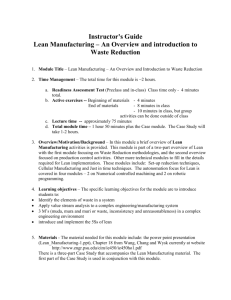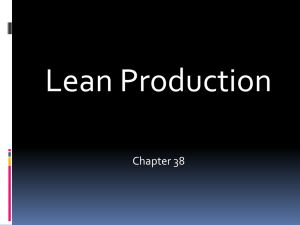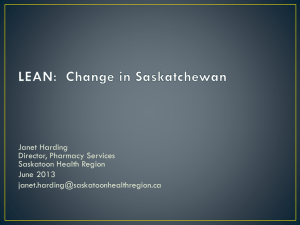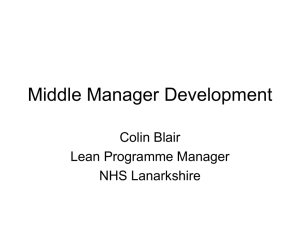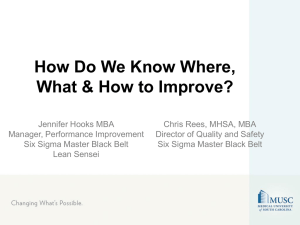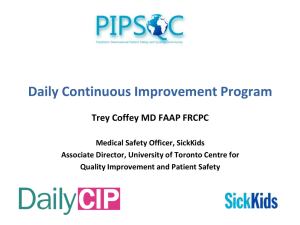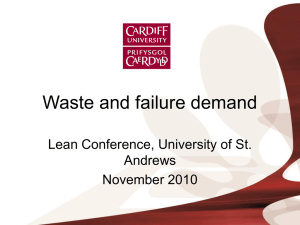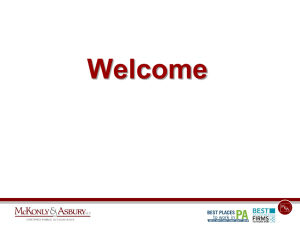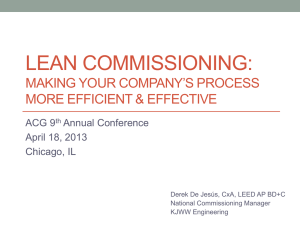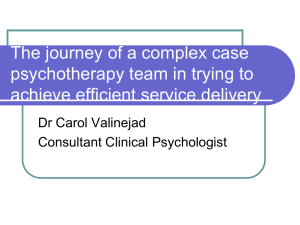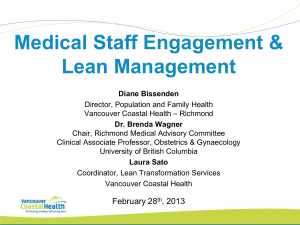Why Lean Thinking? - Agriculture and Rural Development
advertisement
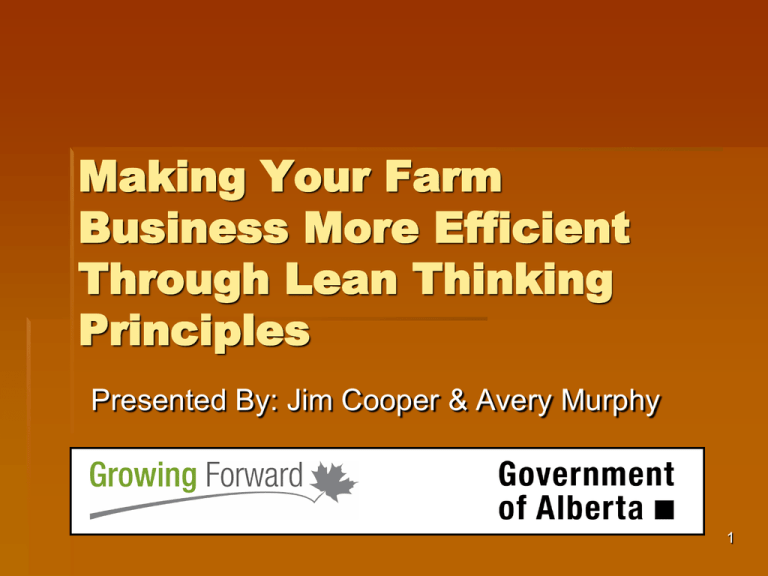
Making Your Farm Business More Efficient Through Lean Thinking Principles Presented By: Jim Cooper & Avery Murphy 1 Why Lean Thinking? The ability to adapt to the mindset as an early adopter should provide a competitive advantage to the farm operation, as your operation can act as a partner in improving the entire chain from field to table 2 What is Lean Thinking? Lean Thinking is a systematic approach to identifying and eliminating waste while focusing on adding value to your internal and external customers. 3 What is Lean Thinking? Lean thinking describes an approach to business that aims to deliver more and more with less and less . Less human effort, Less equipment, Less time Less space Lean thinking involves identifying and eliminating all forms of waste in supply chains and focusing instead on what delivers value for consumers. 4 The Lean Drivers • Lean Thinking • Employee Involvement People Customer Success Process • Flow • Elimination of Waste Technology • Tools to support people and process 5 Defining Value 6 Defining Waste Waste is anything that consumes time or resources but does not add value to the product or service, as viewed from the perspective of the customer. 7 Wastes Waiting -Long period of inactivity for people, information, machinery, or materials Procrastination Calls not returned Waiting for clarification or approval from the “ Boss” No inventory control Unnecessary Motion -Extra steps taken by employees and equipment to accommodate inefficient process layout, defects, reprocessing, overproduction or excess inventory Walking around an unorganized shop Location of office Employee turnover 8 Wastes (con’t) Defects –Frequent errors in paperwork, product resulting in scrap, rework or repair Confusion due to poor communication Data entry error (age verification, pedigree registration, Agri-Stability) Spoiled product Inappropriate Processing – Using the wrong sets of tools, procedures or systems Entering data several times Improper equipment for the job 9 Wastes (con’t) Overproduction – Producing more/sooner than the internal or external customer needs Mixing of products that can expire Excessive storage of products until the customer needs them Unnecessary Inventory – Excessive storage and delay of information or products. Wrong materials Sales on raw materials 10 Wastes (con’t) Transportation – Excessive movement of people, information, or materials. Handling damage could be incurred. Not finishing jobs Poor planning -Untapped Human Capital Skill sets of employees Part-time or contract hire for unwanted or highly skilled task Teamwork -Energy Power waste 11 5S Ford Motor Co. 12 Lean Thinking for Producers in Alberta 5 primary producers from both crop and livestock production have taken advantage of program funding. 13 Potential Funding for Producers in Alberta Growing Forward Productivity Improvement Project for Producers Phase 1: Introductory Educational session Introducing and developing the producer’s education in Lean principles. Cost: 100% covered by AB Agriculture and Rural Development (ARD) Phase 2: In-depth Training Session Identification of opportunities for Key Improvement Projects and actions for the company to pursue a Lean culture and continual 14 process improvement. Is this for my Operation? Primary producer with an Alberta crop or livestock operation with a market value of production exceeding $10,000 annually; Willing to share information with Alberta Agriculture and Rural Development (ARD) staff and consultants; Motivated to implement change, provide resources and commit time; Part of an existing value chain (preferably) 15 Questions? 16

